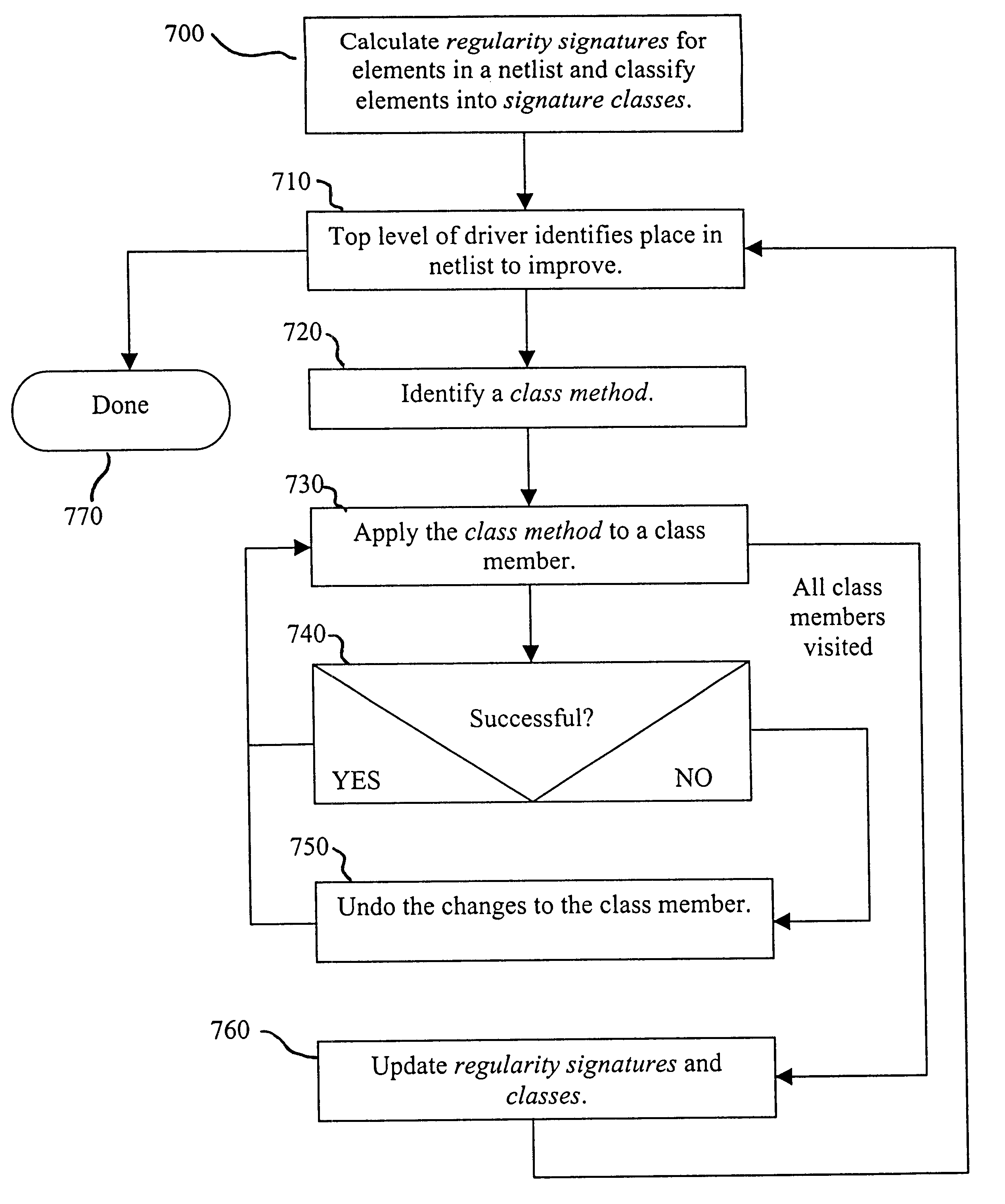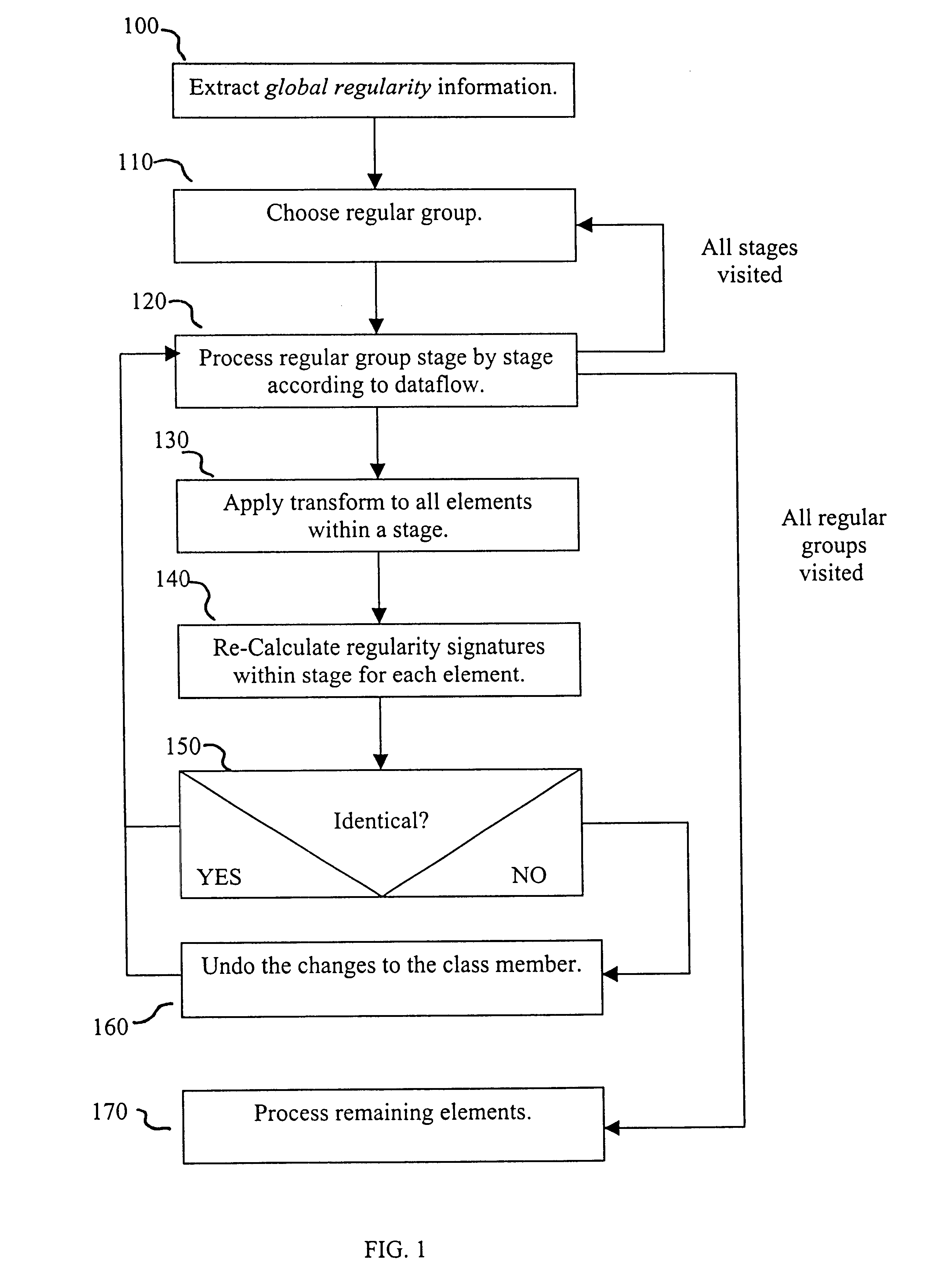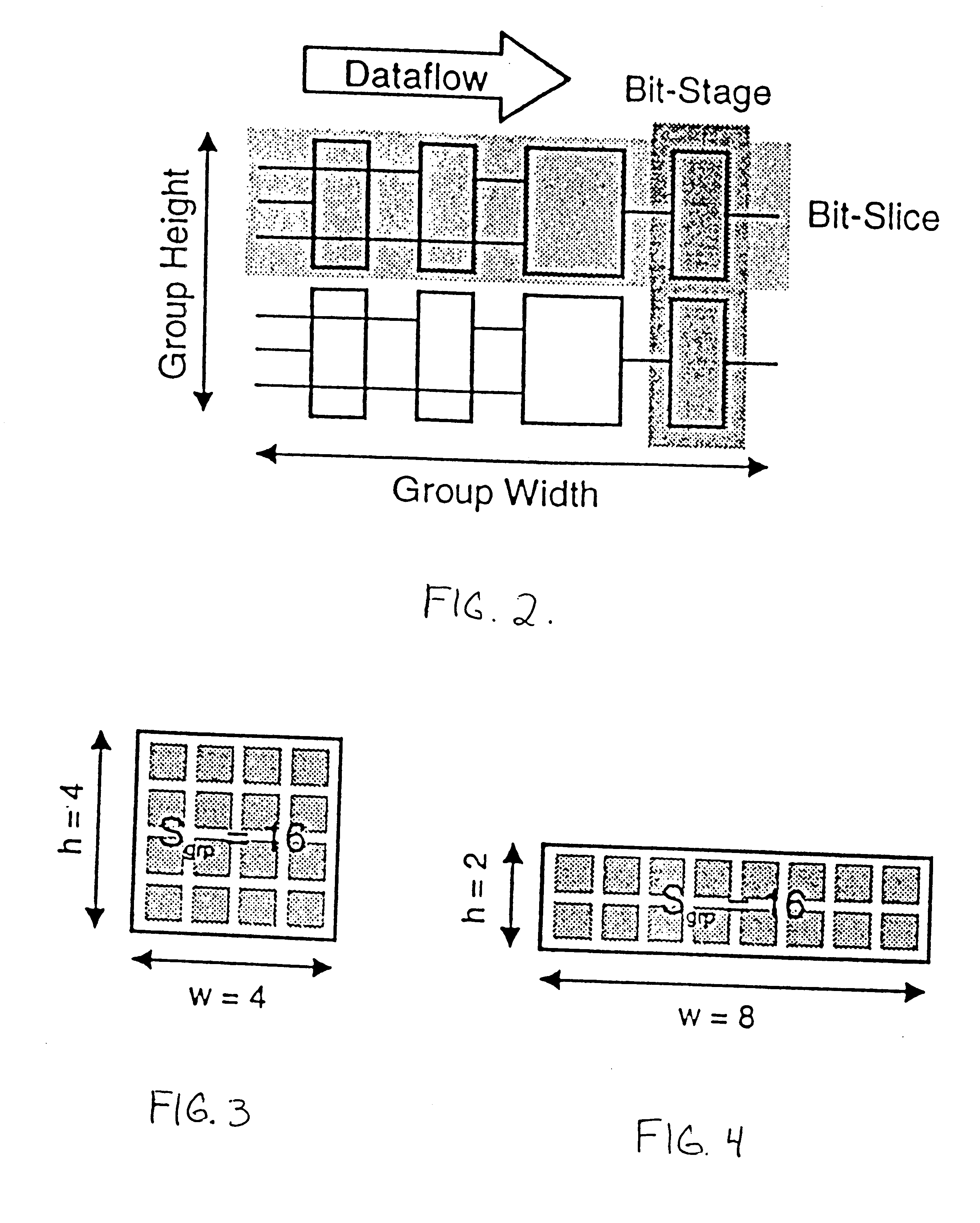Method for preserving regularity during logic synthesis
a logic synthesis and regularity technology, applied in the field of automatic design of electronic devices, can solve the problems of microelectronic designs, new challenges to existing design automation tools, and present a considerable challenge to current synthesis tools
- Summary
- Abstract
- Description
- Claims
- Application Information
AI Technical Summary
Benefits of technology
Problems solved by technology
Method used
Image
Examples
Embodiment Construction
According to one embodiment of the present invention, a design is represented as a netlist comprising a set of gates G, a set of nets N and pins P.OR right.G.times.N. The gates G, nets N and pins P are elements of a netlist. Furthermore, global regularity of a design refers to the assignment of elements of a netlist to regular groups. A regular group is a two-dimensional arrangement of identical or similar structures of elements, referred to as slices, as shown in FIG. 2. Further, a vertical entity of a regular group is called a stage.
The present invention utilizes drivers and transforms within the framework of an electronic design automation tool. A driver is a part of an algorithm which decides where and how to apply an action in a design or netlist. While a transform is a part of an algorithm, which applies the action, modifying the netlist. The driver iterates through the design, determines a beneficial sequence of transformations and selectively applies the transformations to a...
PUM
 Login to View More
Login to View More Abstract
Description
Claims
Application Information
 Login to View More
Login to View More - R&D
- Intellectual Property
- Life Sciences
- Materials
- Tech Scout
- Unparalleled Data Quality
- Higher Quality Content
- 60% Fewer Hallucinations
Browse by: Latest US Patents, China's latest patents, Technical Efficacy Thesaurus, Application Domain, Technology Topic, Popular Technical Reports.
© 2025 PatSnap. All rights reserved.Legal|Privacy policy|Modern Slavery Act Transparency Statement|Sitemap|About US| Contact US: help@patsnap.com



